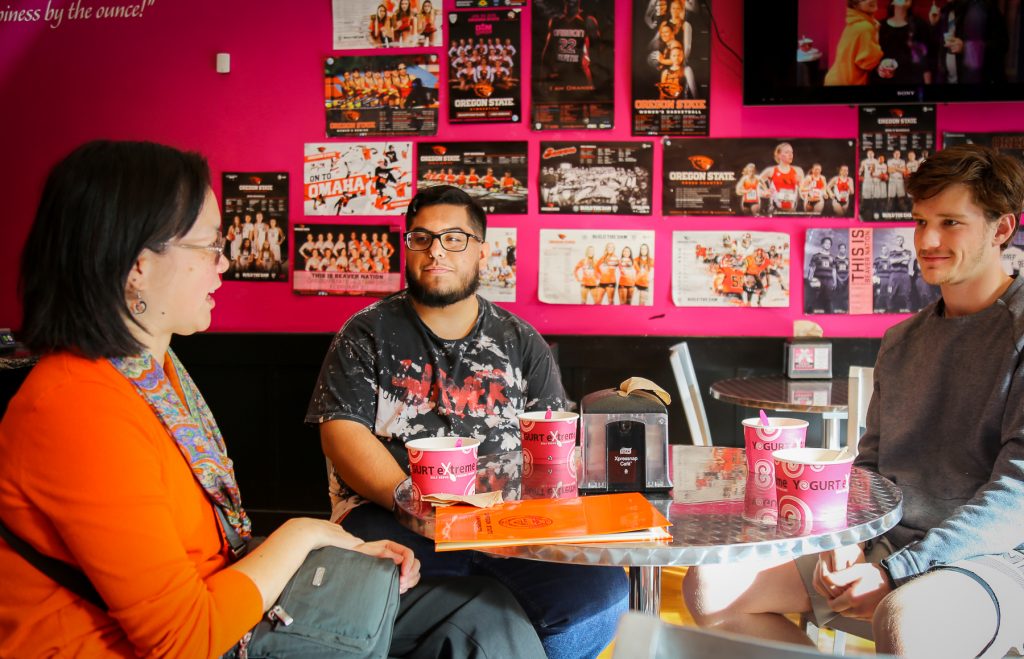 A task force that studied implementation of the Oregon Resilience Plan submitted to the Oregon legislature an ambitious program to save lives, mitigate damage and prepare for a massive subduction zone earthquake and tsunami looming in the future of the Pacific Northwest.
A task force that studied implementation of the Oregon Resilience Plan submitted to the Oregon legislature an ambitious program to save lives, mitigate damage and prepare for a massive subduction zone earthquake and tsunami looming in the future of the Pacific Northwest.
The recommendations of the Governor’s Task Force on Resilience Plan Implementation, if enacted, would result in spending more than $200 million every biennium in a long-term initiative.
The program would touch everyone from energy providers and utility companies to their customers, parents and school children, businesses, builders, land use regulators, transportation planners and fire responders. It would become one of the most aggressive efforts in the nation to prepare for a costly, life-threatening disaster that’s seen as both catastrophic and inevitable.
“We have a clear plan for what needs to be done, and now is the time to take our first significant steps forward,” said Scott Ashford, dean of the College of Engineering at Oregon State University, chair of the Governor’s Task Force, and an expert on liquefaction and earthquake engineering who has studied disasters all over the world, similar to those that Oregon will face.
“The scope of the disaster that the Pacific Northwest faces is daunting,” Ashford said. “And we won’t be able to accomplish everything we need to do in one or two years, but hopefully we won’t have to. What’s important is to get started, and the time for that is now.”
The task force making these recommendations included members of the Oregon legislature; advisers to Gov. Kitzhaber; private companies; the Oregon Office of Emergency Management; Oregon Department of Transportation; the Oregon Health Authority; city, county and business leaders; the Red Cross and others.
The Oregon Resilience Plan, which was completed in early 2013, outlines more than 140 recommendations to reduce risk and improve recovery from a massive earthquake and tsunami that’s anticipated on the Cascadia Subduction Zone, similar to the one that hit Fukushima, Japan, in 2011.
The newest analysis identified specific steps that are recommended for the 2015-17 biennium. They address not only earthquake damage, but also the special risks facing coastal residents from what is expected to be a major tsunami.
One of the largest single steps would be biennial funding of $200 million or more for the OBDD/IFA Seismic Rehabilitation Grant Program, with similar or higher levels of funding in the future. Funds could be used to rehabilitate existing public structures such as schools to improve their seismic safety; demolish unsafe structures; or replace facilities that must be moved out of a tsunami inundation zone.
It was recommended that additional revenue be identified to complete work within a decade on the most critical roads and bridges that form “backbone” transportation routes; that the state Department of Geology and Mineral Industries receive $20 million to update inventory and evaluate critical facilities; and that $5 million be made available through existing programs for tsunami resilience planning by coastal communities.
Utility companies regulated by the Oregon Public Utility Commission would also be required to conduct seismic assessments of their facilities, and be allowed through rate increases to recover their costs if they make prudent investments to mitigate vulnerabilities.
“When I studied areas that had been hard-hit by earthquakes in Chile, New Zealand and Japan, it became apparent that money spent to prepare for and minimize damage from the earthquake was hugely cost-effective,” Ashford said.
“One utility company in New Zealand said they saved about $10 for every $1 they had spent in retrofitting and rebuilding their infrastructure,” he said. “There’s a lot we can do right now that will make a difference and save money in the long run.”
Other key recommendations included:
- Establish a resilience policy adviser to the governor;
- Use the most recent tsunami hazard maps to redefine the inundation zone for construction;
- Provide $1 million annually for scientific research by Oregon universities, to provide matching funds for earthquake research supported by the state, federal government or private industry;
- Provide $500,000 to the Office of Emergency Management for educational programs and training aimed at managers, agencies, businesses and the general public;
- Provide $500,000 to the Department of Education to lead a K-12 educational program;
- Require water providers and wastewater agencies to complete a seismic risk assessment and mitigation plan, as part of periodic updates to master plans;
- Require firefighting agencies, water providers and emergency management officials to create joint standards to use in a firefighting response to a large seismic event.
“Our next steps will include a lot of discussion, with the legislature, with business and community leaders, with the general public all over the state,” Ashford said. “The challenges we face are enormous but I really believe Oregonians are ready to take an important step toward resilience. This is our chance.”
Article via OSU News and Research Communications






